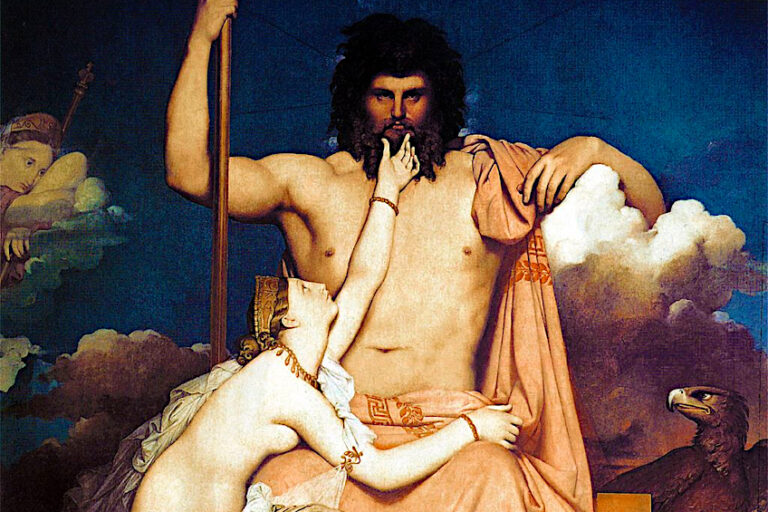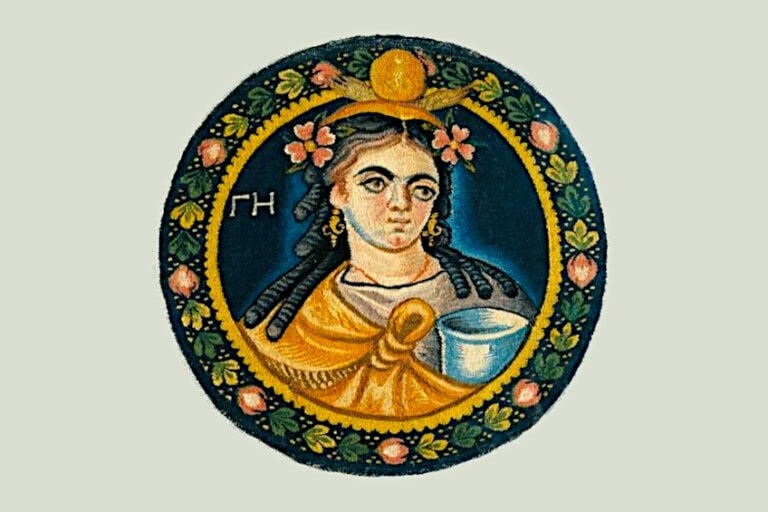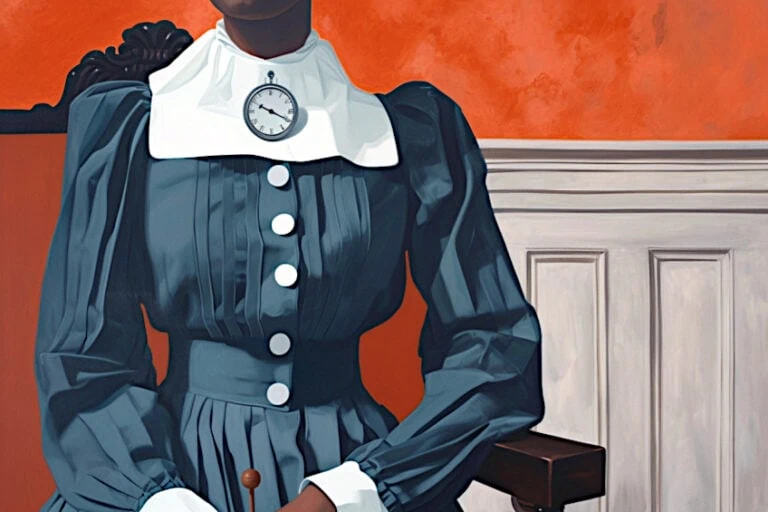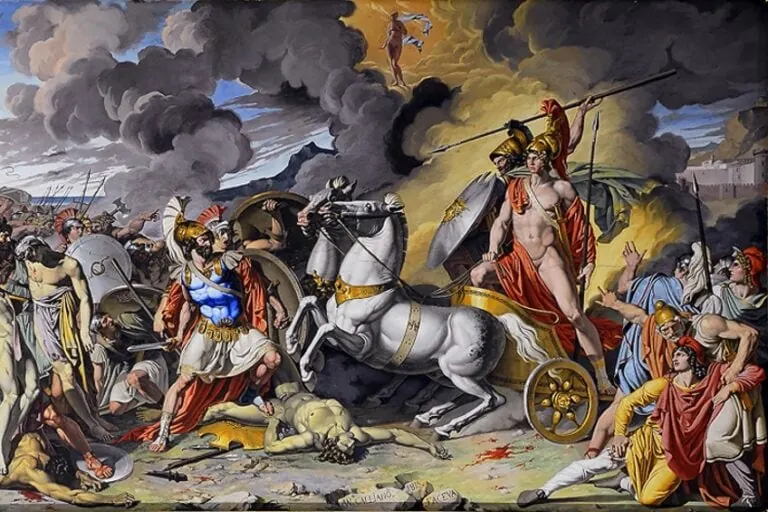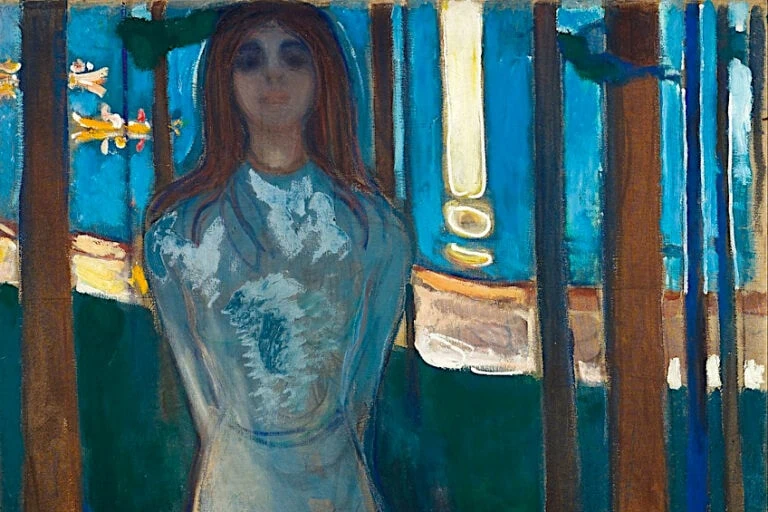Greek Goddess Hera – Queen of the Olympian Pantheon
You may have heard of the Greek goddess Hera, but what is Hera the Goddess of? The Roman name of Hera is Juno, and she is the famed goddess of marriage. The Hera Goddess’ symbol is the royal scepter and she is the wife of Zeus, the almighty king of the gods of Olympus. To find out all the interesting facts about Hera, continue reading below!
The Significance of the Greek Goddess Hera
| Name | Hera |
| Gender | Female |
| Symbols | Royal scepter, and pomegranate |
| Personality | Majestic, solemn, vengeful, and jealous |
| Domains | Marriage, birth, women, and the heavens |
| Parents | Cronus and Rhea |
| Spouse | Zeus |
In the Olympian pantheon, Hera is considered the queen of the Olympians and the wife of Zeus. She is acknowledged as the goddess of marriage and birth. Despite this title, Hera was known to be envious and spiteful towards her husband Zeus’ numerous mistresses and offspring.
Hera also had a reputation for lashing out at mortals who opposed her, such as Paris.
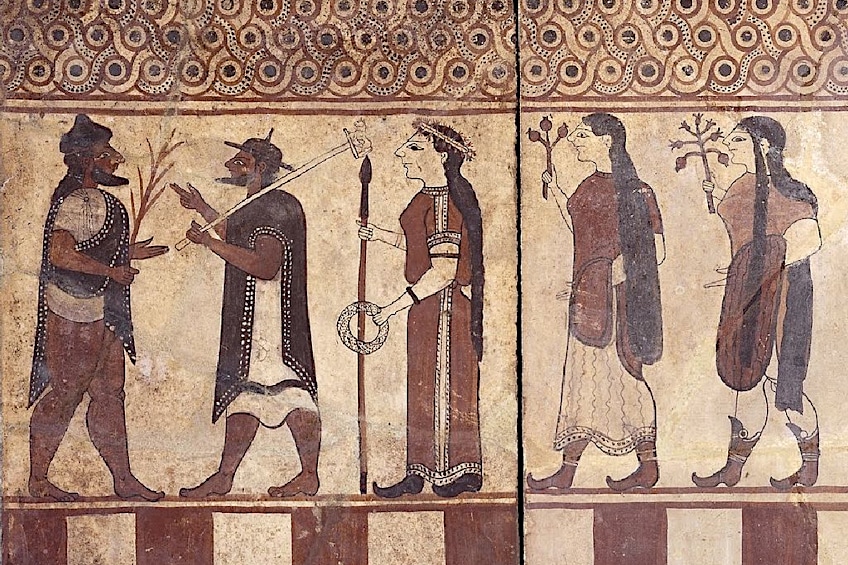 Etruscan Boccanera Plaques from Cerveteri depicting the judgement of Paris with from left to right: Elcsantre (Paris Alexandros); Turms (Hermes); Menrva (Athena); Uni (Hera); Turan (Aphrodite) (560 – 550 BCE); See page for author, Public domain, via Wikimedia Commons
Etruscan Boccanera Plaques from Cerveteri depicting the judgement of Paris with from left to right: Elcsantre (Paris Alexandros); Turms (Hermes); Menrva (Athena); Uni (Hera); Turan (Aphrodite) (560 – 550 BCE); See page for author, Public domain, via Wikimedia Commons
This came after Eris (Discord) threw an apple bearing the words “for the most beautiful” amongst the Olympian goddesses at the wedding feast of Thetis and Peleus. Since Hera, Aphrodite, and Athena all claimed the apple, Troy’s prince Paris was chosen as judge. Aphrodite won by bribing him with the promise that she would make Helen, the most desirable woman in the world fall in love with him. Unfortunately, Helen was already married, so when Paris ran off with her, the result was the Trojan War, during which Hera and Athena did everything in their power to destroy Paris’ home and family.
Hera is shown in artworks looking majestic and serious, wearing a polos, a tall cylindrical crown worn by several of the great Greek goddesses.
Family and Background of the Greek Goddess Hera
Hera is the Titan Cronus’s youngest daughter, whom he had conceived with his wife, Rhea. To avoid being displaced by one of his offspring, Cronus devoured all of his infants until his wife fooled him into eating a stone in place of Zeus, her youngest child. Zeus was raised in secret and fooled Zeus into regurgitating all of his siblings, which included Hera. Zeus then organized an uprising against the Titans, banishing them and dividing world sovereignty with his brothers Hades and Poseidon.
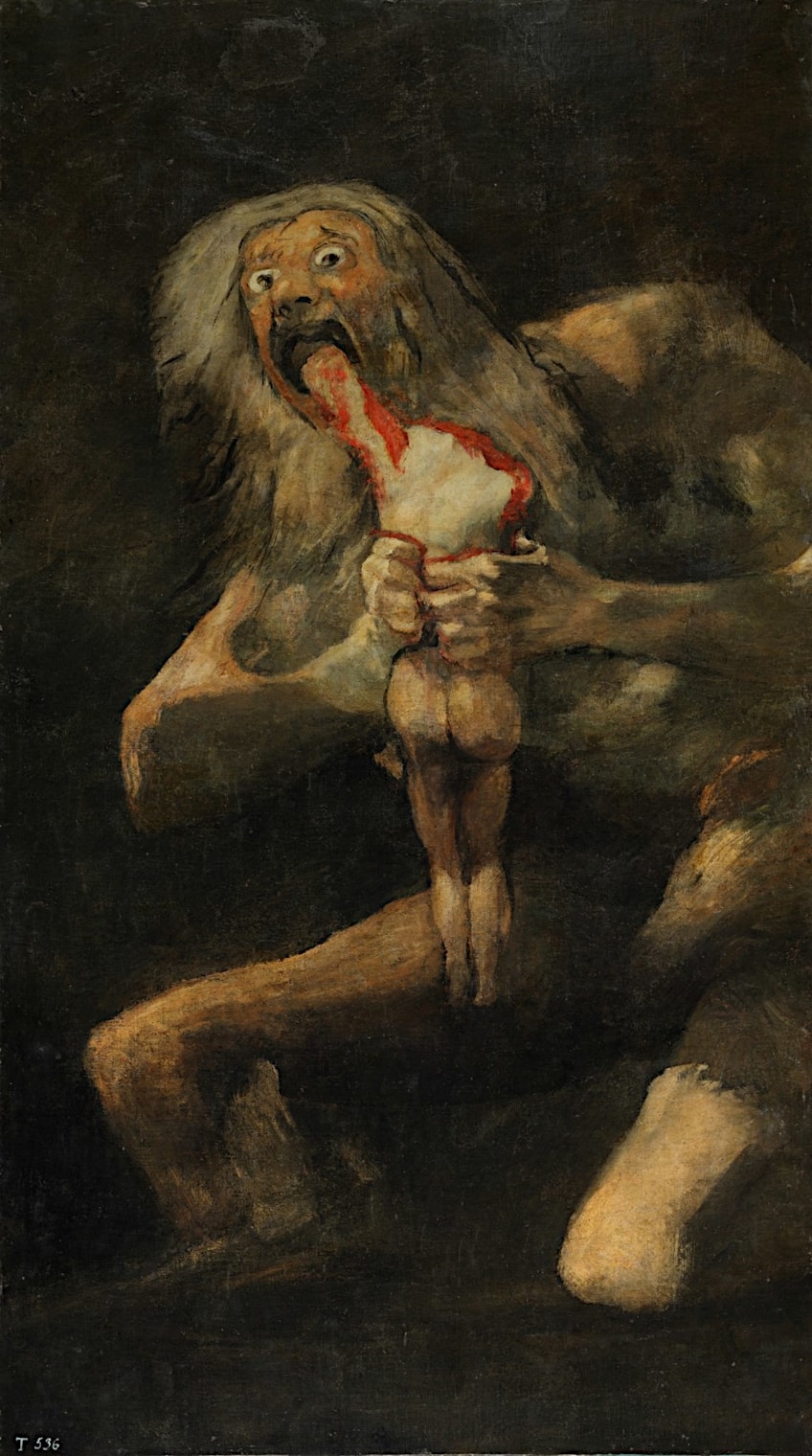 Saturn (Cronus) Devouring his Son by Francisco de Goya (between 1819 and 1823); Francisco de Goya y Lucientes, CC BY-SA 4.0, via Wikimedia Commons
Saturn (Cronus) Devouring his Son by Francisco de Goya (between 1819 and 1823); Francisco de Goya y Lucientes, CC BY-SA 4.0, via Wikimedia Commons
Hera was ingested by her father Cronus, but restored to life by Zeus and Metis, after which she was, according to Pausanias, given nourishment as a newborn by the three Asterion River daughters: Prosymna, Euboia, and Akraia.
In the Iliad, Hera says, “I depart now to the ends of the accommodating earth on an excursion to the sea, where the gods arose, and Tethys the mother who raised me in her own house, and looked after me, at the moment when Zeus drove Cronus beneath the earth and waters”.
Marriage to the King of the Gods
Hera serves as the goddess of marriage and birth instead of motherhood, and her union with Zeus, her brother, is central to her mythology. Zeus seduces her and charms her; he commits adultery and has numerous offspring with mortals and goddesses alike; she is envious of his offspring, as well as their mothers; he becomes menacing and abusive to her. Pausanias tells the story of how they met, and how Zeus turned into a cuckoo to court Hera.
Zeus conjured a violent storm and turned himself into a cuckoo, which swooped down and rested on Hera’s lap while she was alone on her way to Mount Thornax. Hera draped her shawl over him. Zeus then reformed and grabbed her; when she refused to sleep with him because of their mother, he vowed to marry her.
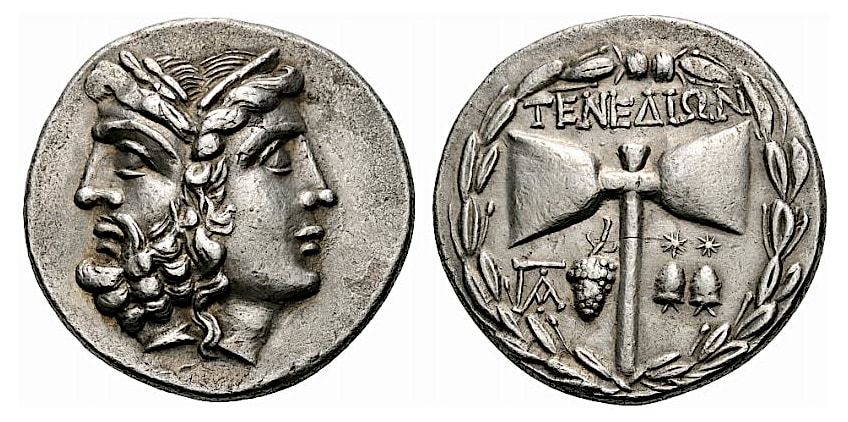 Silver coin featuring a Janiform head composed of a laureate and bearded head of Zeus to left and a diademed head of Hera to right from the Mysia Islands off Troas, Tenedos (c. 100-70 BCE); Exekias, CC BY 2.0, via Wikimedia Commons
Silver coin featuring a Janiform head composed of a laureate and bearded head of Zeus to left and a diademed head of Hera to right from the Mysia Islands off Troas, Tenedos (c. 100-70 BCE); Exekias, CC BY 2.0, via Wikimedia Commons
According to one story, Hera declined to wed Zeus and went into hiding in a cave to escape him; a man called Achilles persuaded her to give him a chance, and so the two had their first sexual encounter. In this story, Hera was raised on Euboea by Macris, a nymph, but Zeus took her away.
The Role of Hera in Greek Mythology
Hera was in charge of the well-being of women and children. Ancient Greek women would offer prayers to her for assistance during delivery. They also prayed to Hera for good health and advice in marriage and love relations. Hera’s own marriage, however, became more difficult for her to handle. Every time Hera found another of Zeus’ relationships, she flew into a rage and demanded retribution on the women with whom Zeus had cheated.
Hera’s punishments included transforming Callisto into a bear and extending Leto’s labor to a tortuous nine months. She would occasionally release her fury on Zeus’ children from other mothers. She notoriously brought two venomous serpents to Heracles’ cradle in order to punish him for being the offspring of Zeus’ romance with Alcmene.
There has been much speculation, dating back to Johann Jakob Bachofen in the mid-19th century, that Hera, whose early significance in Greek religion has been well documented, originally served as the goddess of the matriarchal society that inhabited Greece prior to the Hellenes. According to this view, her role as goddess of marriage produced the patriarchal link of her own subservience: her opposition to Zeus’ conquests is interpreted as Hera’s “jealousy”, the principal focus of literary stories that undermined her ancient devotion. However, the existence of an old matriarchy or a cultural emphasis on a monotheistic Great Goddess remains a contentious claim. Modern scholars usually reject the theory as lacking adequate evidence.
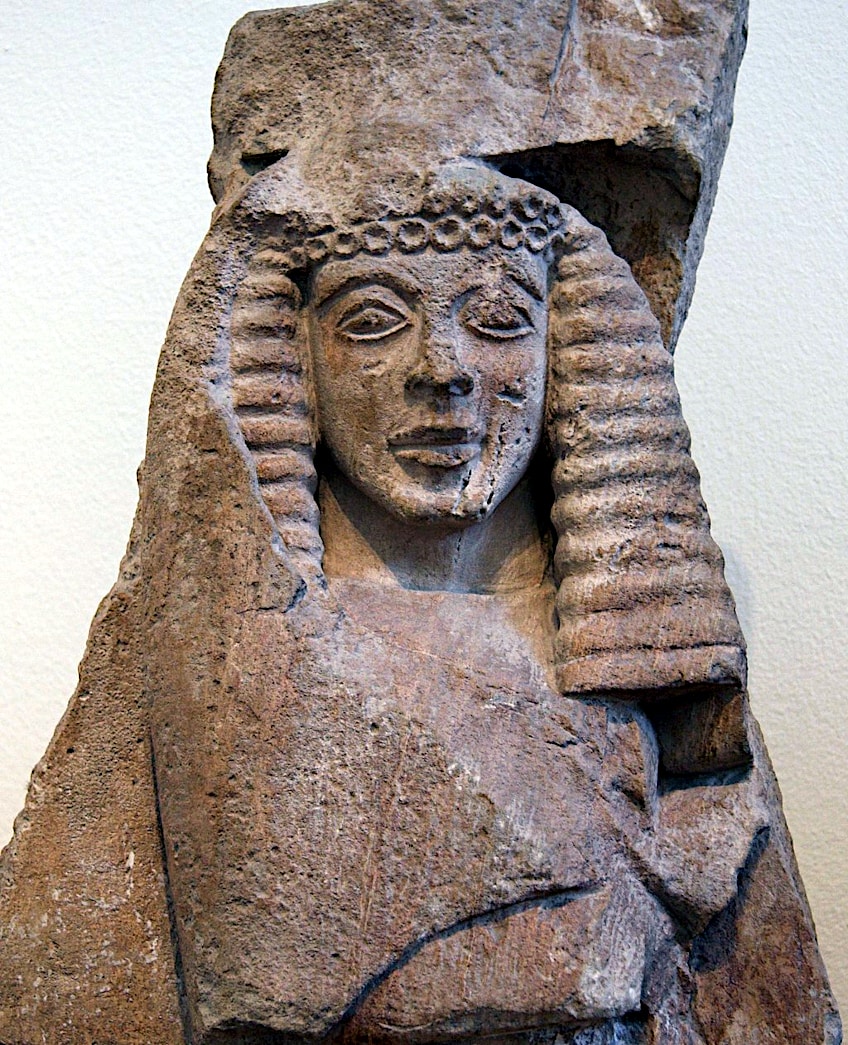 Relief torso limestone Hera from Mycenae (630-620 BCE); Ismoon (talk) 14:35, 3 January 2022 (UTC), CC BY-SA 4.0, via Wikimedia Commons
Relief torso limestone Hera from Mycenae (630-620 BCE); Ismoon (talk) 14:35, 3 January 2022 (UTC), CC BY-SA 4.0, via Wikimedia Commons
The Cult of Hera
It is believed that the Greek Goddess Hera may have been the very first deity to be honored with a roofed and enclosed temple sanctuary, at Samos around 800 BCE. Later, it was supplanted with the Heraion of Samos, one of the biggest Greek temples. Because there were numerous temples established at this site, the documentation is somewhat unclear, and the archaeological dates are unresolved. The Rhoecus temple was razed around 570 BCE and the Polycratean temple took its place. There is apparently no indication of tiles on this temple, indicating that it was never completed or that it was open to the sky. Earlier sanctuaries, whose devotion to Hera is uncertain, were of the Mycenaean type known as “house sanctuaries”.
Excavations on Samos have unearthed votive offerings, the majority of which date from the late 8th and 7th centuries BCE, demonstrating that on Samos Hera was more than just a local Aegean goddess: the museum there features figures of gods, as well as votive gifts from Babylon, Armenia, Assyria, Iran, and Egypt, attesting to the sanctuary’s popularity and the significant number of pilgrims.
 Votive offering in the temple of Hera resembling a vehicle-like object with two passengers; Ancaeus, CC BY-SA 4.0, via Wikimedia Commons
Votive offering in the temple of Hera resembling a vehicle-like object with two passengers; Ancaeus, CC BY-SA 4.0, via Wikimedia Commons
The Attributes and Personality of the Greek Goddess Hera
Hera is often portrayed as a strong and majestic goddess with a multifaceted personality that contains both good and bad characteristics. Hera is recognized for her commitment to marriage and her family. She is usually portrayed as a caring wife and mother who protects and provides for her family. She is also linked to conception and birth and was invoked by women hoping to fall pregnant or to pray for safe and healthy births. Hera, on the negative side, is notorious for her jealous behavior and vengefulness. As befits the symbol of marriage, Hera was fanatical in defending her place as Zeus’ wife, going to considerable measures to bring down his lovers and illicit offspring.
 Statue of Hera (early 1st Century CE Roman copy of an early 4th Century BCE Greek original); Naples National Archaeological Museum, CC0, via Wikimedia Commons
Statue of Hera (early 1st Century CE Roman copy of an early 4th Century BCE Greek original); Naples National Archaeological Museum, CC0, via Wikimedia Commons
Out of envy, she even attacked Zeus’ favorite son Heracles. Hera’s vengeance and rage were also apparent in her relationships with the other divinities. She was known for her harsh language as well as her quick temper, and she was not afraid to use her abilities to punish anyone who disobeyed her.
Her character, according to a description by Homer, is not particularly charming, with a prominent trait of obstinacy, and a temperament conducive to arguing and tantrums that at times make her own husband recoil with fear. As a result, Zeus and Hera have regular disagreements, and on one occasion Hera, together with Poseidon and Athena, considered imprisoning Zeus.
Role in Greek Mythology
Despite her shortcomings, Hera was regarded as an influential and intelligent goddess with a thorough understanding of how the world worked. She was connected with the stars, the sky, and the seasons, and she was often prayed to in order to assure good weather and crops. Her capacity to regulate the weather and assure good harvests made her a revered divinity among farmers and those who relied on the land for a living. Hera’s personality attributes frequently had a major effect on her relationships with other divine beings. Her jealousy and rage towards Zeus’ mistresses and illegitimate children caused several famous conflicts and tragedies in Greek mythology.
At the same time, her strength and wisdom garnered her the admiration of other divinities, even if they weren’t always in agreement with her actions.
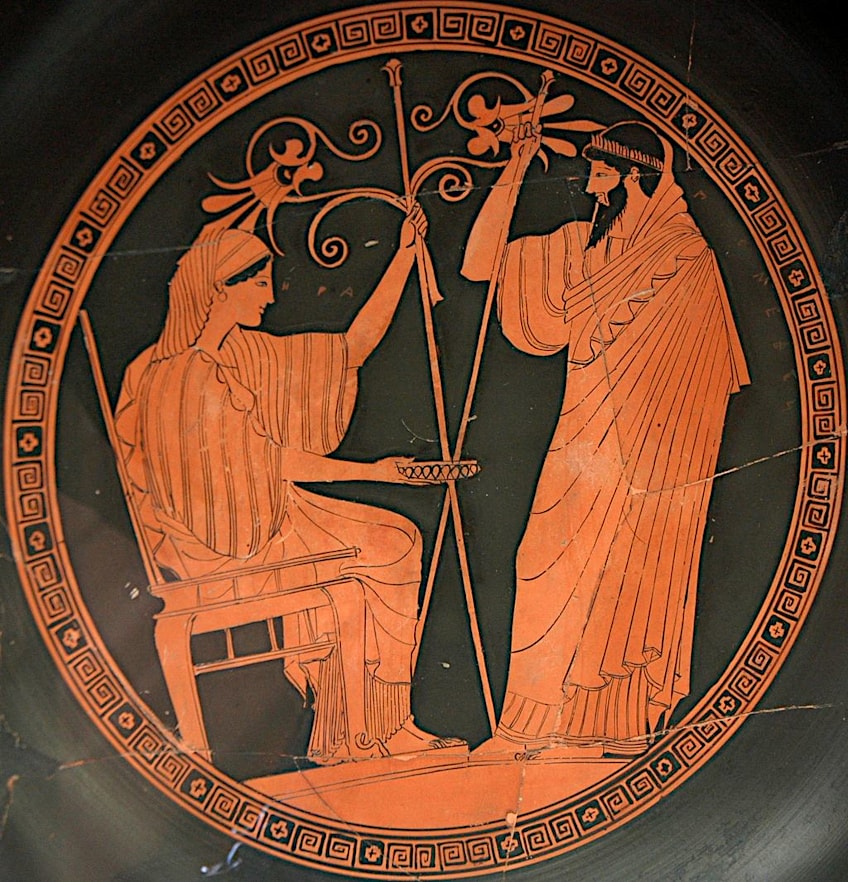 Tondo of an Attic red-figured kylix with an image of Hera and Prometheus (490–480 BCE); Douris, Public domain, via Wikimedia Commons
Tondo of an Attic red-figured kylix with an image of Hera and Prometheus (490–480 BCE); Douris, Public domain, via Wikimedia Commons
Hera’s Physical Appearance and Symbols
Hera is often depicted as a regal and attractive woman wearing long, flowing clothes and a characteristic cylindrical crown, or a veil and wreath. Many other goddesses in the region also wore the high cylindrical crown. These crowns were frequently regarded as matronly, as they linked Hera not only to Rhea but also to Cybele, the Phrygian Mother of the Gods. Her hair is golden and cascades in beautiful curls about her face, and her eyes are usually depicted as large. Hera had an assortment of holy animals, the most notable of which was the peacock, as well as the cow and the cuckoo bird.
The peacock is regarded as one of her most significant symbols, representing her royal personality and affinity to the natural world. The cow symbolizes nourishment and fertility. Hera is sometimes seen carrying a scepter capped with a pomegranate, an ancient Greek symbol of fertility. On some occasions, she rides in a chariot drawn by peacocks. In other versions, she bathed in a special spring to restore her virginity and innocence, thus preserving her youthful beauty.
 Detail from a mosaic depicting a peacock at Phocis, Greece; Dennis Jarvis from Halifax, Canada, CC BY-SA 2.0, via Wikimedia Commons
Detail from a mosaic depicting a peacock at Phocis, Greece; Dennis Jarvis from Halifax, Canada, CC BY-SA 2.0, via Wikimedia Commons
Hera’s Domain of Influence
Hera, the goddess of marriage, was especially concerned with the integrity of the marriage union. Women wanting protection during childbirth and lovers seeking fertility and graces for their nuptials frequently pray to her. She was also notorious for her rage and jealousy, especially when it related to her husband Zeus’ multiple indiscretions. Hera was considered to have the capacity to protect women during pregnancy and childbirth, as well as to preserve the health and well-being of babies, as the goddess of fertility and childbirth. She was called upon by mothers seeking fertility as well as safety for their children.
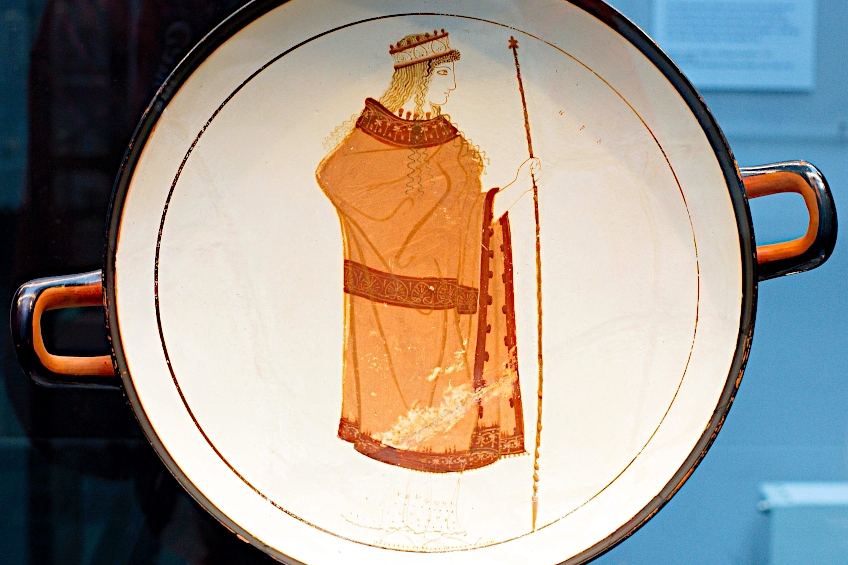 Tondo of an Attic white-ground kylix featuring an image of Hera identified by an inscription of her name (c. 470 BCE); Staatliche Antikensammlungen, CC BY-SA 3.0, via Wikimedia Commons
Tondo of an Attic white-ground kylix featuring an image of Hera identified by an inscription of her name (c. 470 BCE); Staatliche Antikensammlungen, CC BY-SA 3.0, via Wikimedia Commons
Hera was a female guardian who was most concerned with ensuring women’s rights in marriage and the community. She was revered as a protector of women’s dignity and had a reputation for fiercely defending her own honor.
Hera was the queen of the gods, and she represented regal power and authority. Monarchs often turned to her for heavenly protection and guidance, and she was thought to have the capacity to help rulers in the building of their kingdoms. Hera was also associated with natural occurrences such as rain, storms, and lightning, and she was thought to be able to manipulate the weather. Farmers often called upon her for a bountiful crop or assurance against natural disasters.
The Myths of the Greek Goddess Hera
Due to her role as the Queen of the Greek gods, there are many myths associated with Hera. The main Hera worship center was at Argos, a lush region in the Peloponnese, where the Heraion of Argos, the magnificent Hera temple, was built in the 8th century BCE. Hera was not only the principal city goddess in Argos but she was also revered by a devoted cult on the Greek island of Samos.
Hera and Poseidon Contest Argos
According to this myth, Hera and Poseidon were both interested in being the patron deity of Argos, but they couldn’t settle on who should fulfill that role. Poseidon claimed ownership of the city since he had built the natural harbor that was essential to its prosperity as a seaport. Hera, though, contended that she should be in charge since she was the queen of the gods and had the authority to look after the city and its citizens. The two deities agreed to a contest to settle their disagreement. Poseidon hit the ground with his trident, releasing a spring of seawater, while Hera grew an olive tree. The judges, who were Argonian citizens, were required to decide which of the gifts was more valued.
Echoing a similar contest between Athena and Poseidon for possession of Athens, the inhabitants of Argos picked the olive tree as the winner because they believed it could supply them with food, oil, and timber, as well as serve as a symbol of prosperity and harmony.
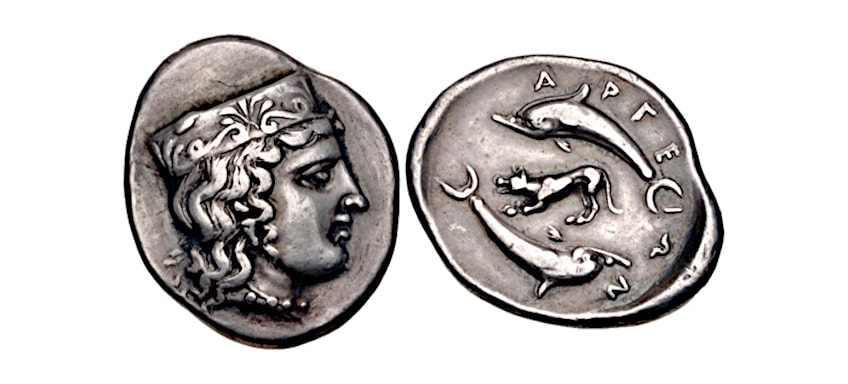 Coin from ancient Argos bearing the head of Hera and dolphins (c. 370-350 BCE); Classical Numismatic Group, Inc. http://www.cngcoins.com, CC BY-SA 3.0, via Wikimedia Commons
Coin from ancient Argos bearing the head of Hera and dolphins (c. 370-350 BCE); Classical Numismatic Group, Inc. http://www.cngcoins.com, CC BY-SA 3.0, via Wikimedia Commons
The result was that Hera became the city’s patron deity, and the olive tree was revered as a holy symbol of her strength and influence. Poseidon, incensed by the choice made, unleashed a sea monster to destroy the city, bringing devastation and chaos. Hera, though, used her strength and influence to slay the monster, protecting the city and its inhabitants. This myth highlights the gods’ influence in ancient Greek culture and emphasizes the competition and disputes that often occurred as the gods vied for control over human affairs.
Hera and Tiresias
Tiresias was a Zeus priest who, as a youth, came across a couple of snakes mating and smacked them with a stick. Suddenly, he changed into a woman. Tiresias, as a woman, became a Hera priestess, was married, and bore children, including Manto. Tiresias encountered snakes mating after seven years as a woman; depending on the version of the myth, Tiresias was either very careful to leave the snakes alone this time, or trod on them and was transformed back into a man. As he had experienced being both male and female, Zeus and Hera tasked him with determining whether the female or male sexes enjoyed greater pleasure during intercourse. Zeus asserted that it was females while Hera argued that it was males. Hera blinded Tiresias when he agreed with Zeus.
Because Zeus was unable to reverse what Hera had done, he bestowed upon Tiresias the gift of prophecy.
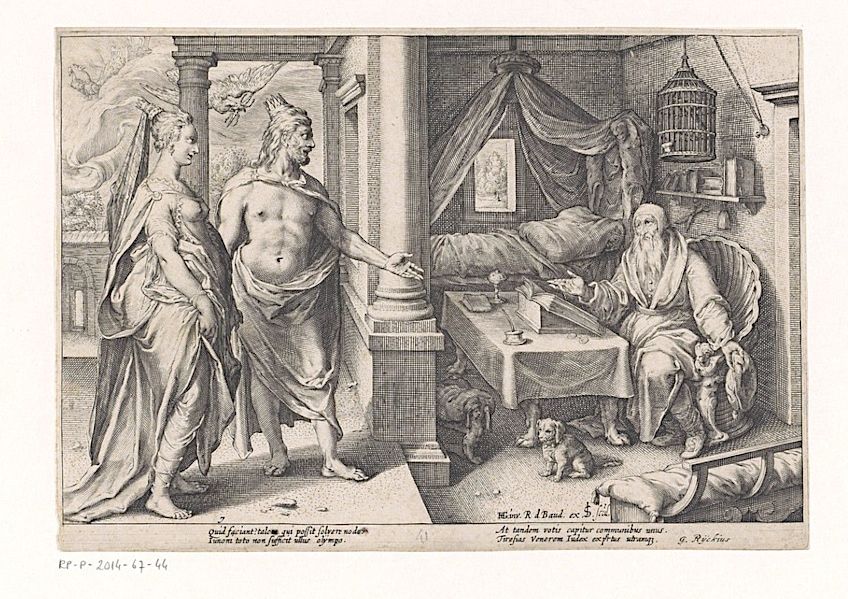 Zeus and Hera consulting Tiresias by the workshop of Hendrick Goltzius (c. 1590 and/or 1615); Rijksmuseum, CC0, via Wikimedia Commons
Zeus and Hera consulting Tiresias by the workshop of Hendrick Goltzius (c. 1590 and/or 1615); Rijksmuseum, CC0, via Wikimedia Commons
Semele and Dionysus
When Hera discovered that the King of Thebes’ daughter, Semele, had been impregnated by Zeus, she dressed as Semele’s nurse and convinced the princess to demand that Zeus appear to her in his real form. When he was forced to do so by Styx, he appeared in the form of thunder, which ended up killing Semele. Zeus abducted Semele’s newborn, Dionysus, and sewed him into his own leg so it could finish its gestation period. In another account, Dionysus was Zeus’s son by either Persephone or Demeter.
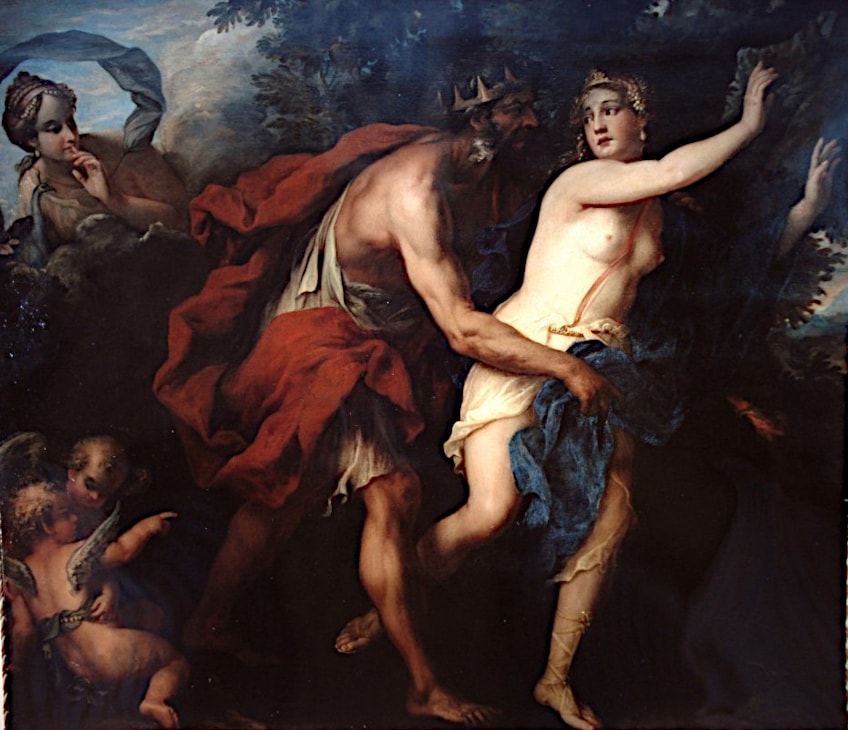 Zeus, Semele, and Hera by Jan Erasmus Quellinus or Erasmus Quellinus II (late 17th Century); Jan Erasmus Quellinus, CC BY-SA 4.0, via Wikimedia Commons
Zeus, Semele, and Hera by Jan Erasmus Quellinus or Erasmus Quellinus II (late 17th Century); Jan Erasmus Quellinus, CC BY-SA 4.0, via Wikimedia Commons
Hera dispatched her Titans to tear the newborn apart, earning him the name Zagreus, which means “Torn in Pieces”.
In some versions Zeus rescued the heart; in others, either Athena, Rhea, or Demeter rescued it. Zeus employed the heart to rebuild Dionysus and place him in Semele’s womb, earning Dionysus the moniker “the twice-born.” According to some accounts, Zeus gave Semele the heart to eat in order to conceive her. Hera duped Semele into requesting Zeus to show his actual appearance, which led to her death. Dionysus was subsequently able to retrieve Semele from the underworld and bring her to Mount Olympus.
Io and Argus
Io’s tale takes several forms, each with its own embellishments. In general, Io was a Hera priestess in the Heraion of Argos. The god Zeus lusted after Io, and either Hera changed her into a cow in order in order to conceal her from Zeus, or the king of the gods did the same but was ultimately discovered. Hera chained Io to an olive tree and assigned Argus Panoptes to keep an eye on her, but Zeus then dispatched Hermes to slay him.
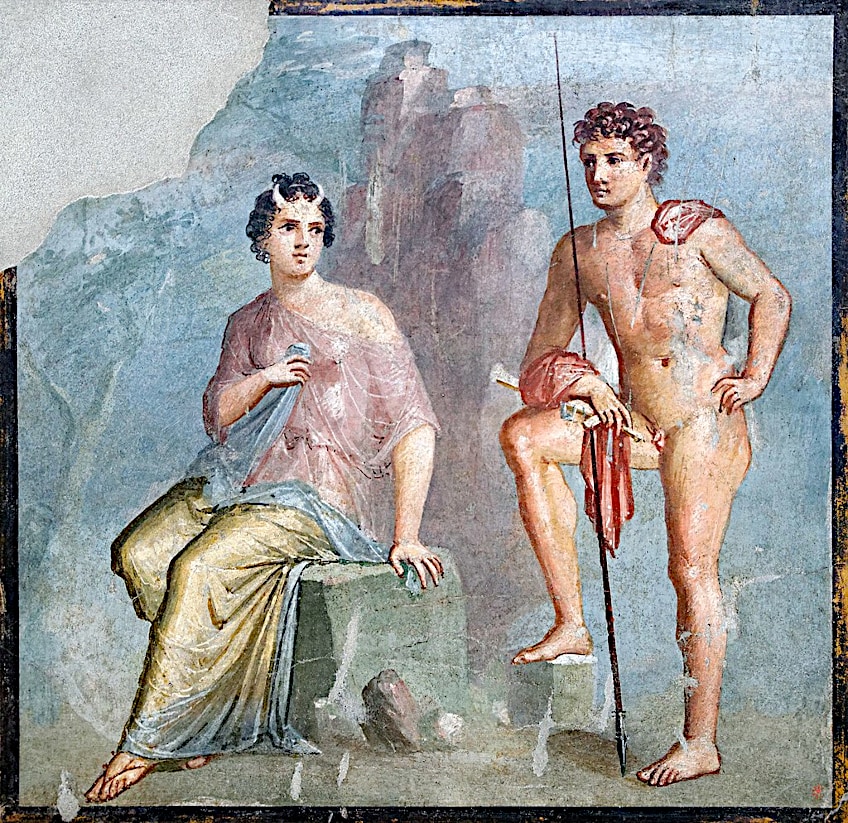 Fresco from Pompeii featuring Io wearing bovine horns watched over by Argos on Hera’s orders (1st Century CE); Naples National Archaeological Museum, Public domain, via Wikimedia Commons
Fresco from Pompeii featuring Io wearing bovine horns watched over by Argos on Hera’s orders (1st Century CE); Naples National Archaeological Museum, Public domain, via Wikimedia Commons
In a rage, Hera summoned a gadfly to chase, stinging Io, who escaped into Asia and finally settled in Egypt. Zeus returned her to human shape there, and she delivered his son Epaphus.
Ixion and Hera
Ixion married Deioneus’ daughter, Dia, and promised a great gift to his father-in-law. Deioneus seized three of Ixion’s horses in punishment after he failed to produce any gift in exchange for the bride. Ixion kept his anger to himself and called upon his father-in-law to join him for a feast in Larissa. Ixion threw Deioneus onto flaming wood and coals when he appeared. The princes from the neighboring regions were so incensed by this betrayal that Ixion became an outcast and was ostracized.
Zeus, though, felt sorry for Ixion and accompanied him to Olympus, where he was welcomed at the gods’ table. Instead of being appreciative, Ixion developed lustful thoughts for Zeus’ wife, Hera. When Zeus learned of his plans, he created a cloud in the likeness of Hera and deceived Ixion into copulating with it.
Ixion was thrown from Olympus and struck by a thunderbolt. Zeus then sent Hermes to tie Ixion to a winged fiery wheel that never stopped spinning. As a result, Ixion is forever linked to a flaming solar wheel.
 Fresco from Pompeii depicting Hera overseeing the punishment of Ixion (1st Century CE); Sailko, CC BY-SA 4.0, via Wikimedia Commons
Fresco from Pompeii depicting Hera overseeing the punishment of Ixion (1st Century CE); Sailko, CC BY-SA 4.0, via Wikimedia Commons
Cydippe and Hera
A Hera priestess, Cydippe, was on her way to a feast in Hera’s honor. The oxen who were supposed to be pulling the cart had not yet arrived so her sons, Cleobis and Biton, hauled the cart the whole way to the feast. Cydippe was moved by their dedication to both her and the goddess and requested Hera to bestow upon her children the highest gift a deity could bestow. Hera decreed that the boys would die peacefully in their sleep.
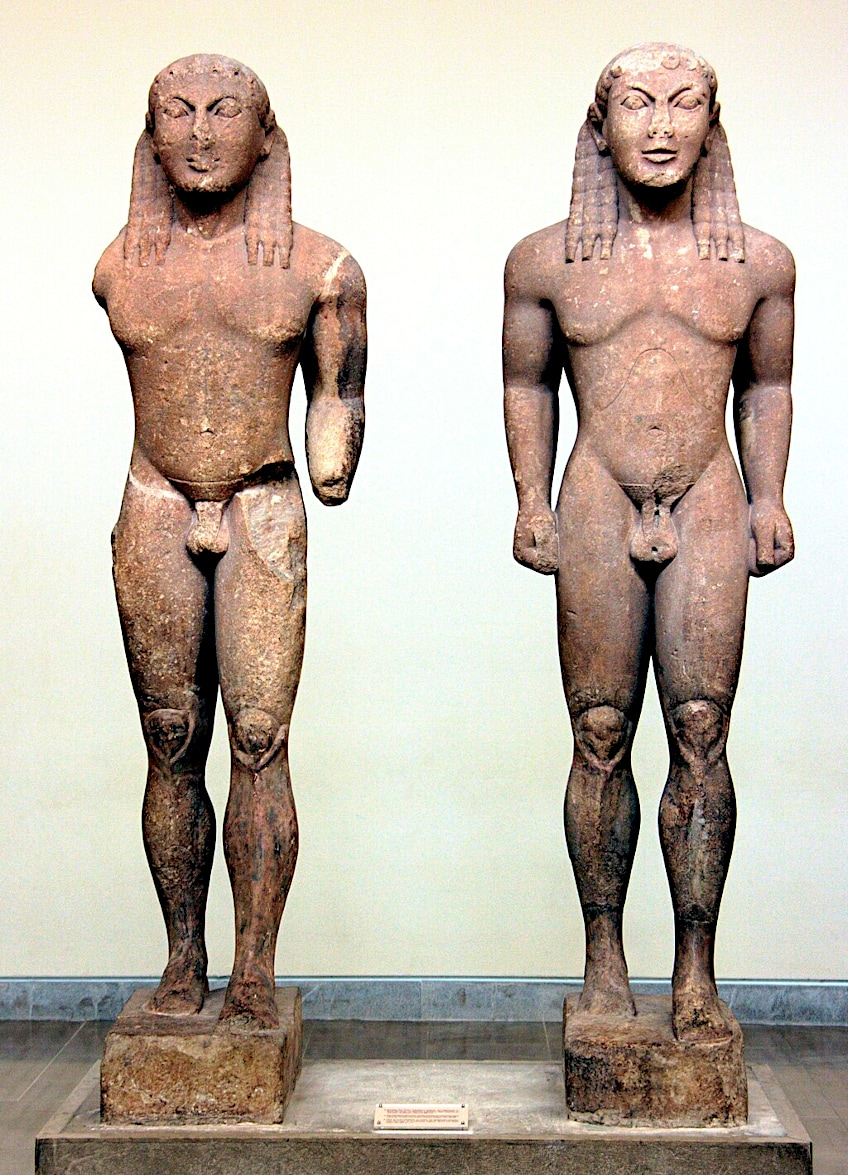 Statues of Cleobis and Biton dedicated by the city of Argos at the sanctuary at Delphi (c. 580 BCE); Vicenç Valcárcel Pérez, CC BY-SA 4.0, via Wikimedia Commons
Statues of Cleobis and Biton dedicated by the city of Argos at the sanctuary at Delphi (c. 580 BCE); Vicenç Valcárcel Pérez, CC BY-SA 4.0, via Wikimedia Commons
This gift conferred upon Cydippe’s sons was later cited as evidence by Solon when attempting to persuade Croesus that it is difficult to measure someone’s happiness until they pass away after living a joyful life.
Hera and the Milky Way
According to one story, Zeus deceived Hera into nursing the baby Heracles; when she realized who he was, she yanked him from her bosom, and a squirt of her milk left a streak over the heavens that can still be seen today. Her milk also gave birth to the white lily flower. The Etruscans, unlike the Greeks, depicted a fully grown Heracles drinking from Hera’s breast. This could also refer to his adoption by Hera after he became immortal.
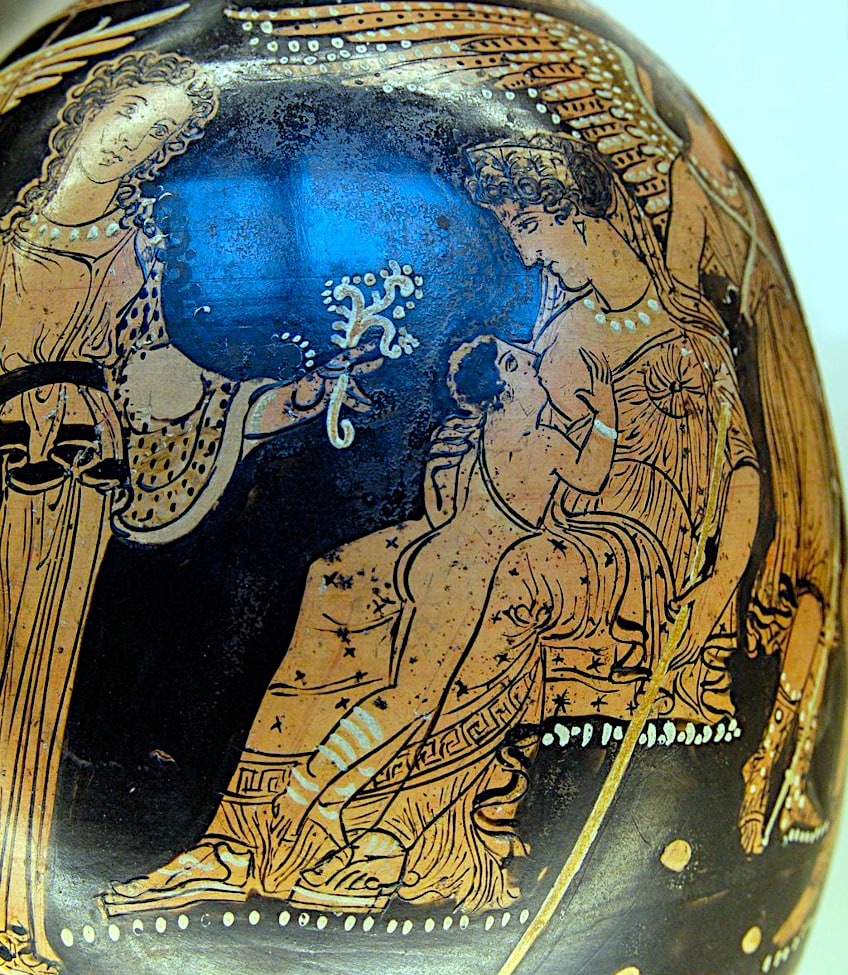 Apulian red-figure squat lekythos featuring an image of Hera suckling Herakles (c. 360-350 BCE); British Museum, CC BY 2.5, via Wikimedia Commons
Apulian red-figure squat lekythos featuring an image of Hera suckling Herakles (c. 360-350 BCE); British Museum, CC BY 2.5, via Wikimedia Commons
The name Heracles is actually etymologically derived from Hera and kleos (fame/renown) reflecting the significant role that Hera’s rage against this hero played in his myth.
Hera delayed Herakles’ birth so that Zeus’ prophesy that a powerful king would be born on a specific day could not apply to Heracles, but to his cousin. Hera sent a snake to kill the hero in his cradle, and later on, she also sent him mad causing him to murder his children. Once reconciled on Olympus, Hera gave Herakles her daughter Hebe by Zeus as bride.
The Influence and Legacy of the Greek Goddess Hera
The Greek Goddess Hera has left a legacy of myths, artworks, and in ancient times – the Heraean Games. For example, there is the Barberini Hera, which is a Roman copy of a since-lost Greek original work. Now housed in the Museo Pio-Clementino, it was excavated in the 17th century in Rome. The goddess is depicted standing, bearing a crown and a garment that clings to her figure and has slid from her left shoulder, almost showing her breast, her right arm holding on to a scepter and clutching a patera in her left.
The Heraean Games
The Heraean Games were an ancient Greek celebration that featured a footrace between young females. It was held every four years at Olympia and most likely coincided with the original Olympic Games of the ancient Greek world. The Hera cult was definitely in place by 600 BCE, when the first Hera temple at Olympia was erected. The races performed at these games were either an initial element of the festival or a subsequent development. The stadion, which was 1/6th shorter than the comparable men’s race, was the sole event held during the Heraean Games. The games were only open to unmarried young ladies.
Although it is unknown how old those competing were, they competed in three distinct age categories. They wore a short chiton cut above the knees, leaving the right breast and shoulder naked, with their hair worn untied.
 Bronze figure of a young female Spartan athlete found in Prizren, Serbia. The short chiton baring one breast matches the outfit that Pausanias says was worn by athletes competing in the Heraean Games (520 – 500 BCE); Caeciliusinhorto, CC BY-SA 4.0, via Wikimedia Commons
Bronze figure of a young female Spartan athlete found in Prizren, Serbia. The short chiton baring one breast matches the outfit that Pausanias says was worn by athletes competing in the Heraean Games (520 – 500 BCE); Caeciliusinhorto, CC BY-SA 4.0, via Wikimedia Commons
The winners received an olive leaf crown and a piece of a cow that has been sacrificed in honor of Hera. They were also allowed to dedicate monuments bearing their names to Hera, however, none of these statues have survived. The Heraean celebration was watched over by a group of 16 women who, in addition to overseeing the games, were in charge of weaving a peplos for the Greek goddess Hera and organizing choral dances in honor of Physcoa and Hippodameia. The Heraean Games might have been puberty rituals or pre-nuptial ceremonies.
Modern Era Influence
Hera’s reputation as a powerful and mighty queen is one of the main reasons for her enduring appeal. She gained notoriety in Greek mythology for her fiery temper and ability to exert her rule over the other deities. Hera’s reputation as a dominant presence has made her an iconic character in literature, cinema, and television. Hera’s connection with marriage and reproduction is another reason for her continuing appeal. She was the goddess of marriage and protected women during childbirth.
This facet of her personality has also made her a prominent figure in modern society, particularly in the context of weddings and love relationships.
Hera is invoked as a symbol of faithfulness and devotion in modern weddings. Hera’s tangled connections with mortals and gods also contributed to her appeal. Hera was Zeus’ jealous and vindictive wife, and she would regularly punish humans who attracted her husband’s attention. From Othello by Shakespeare, to the Thor trilogy, this relationship has been explored in innumerable works of film and literature.
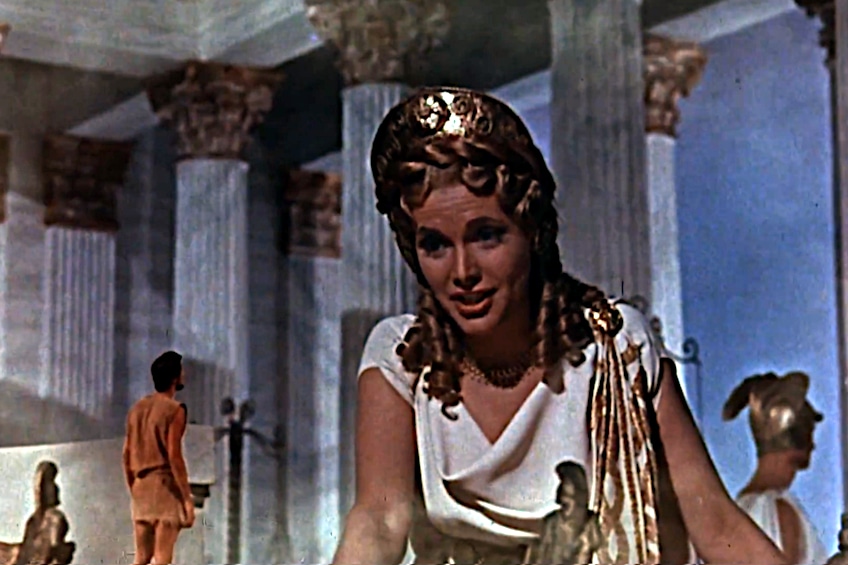 Honor Blackman as Hera in a scene from Jason and the Argonauts (1963); Columbia Pictures, Public domain, via Wikimedia Commons
Honor Blackman as Hera in a scene from Jason and the Argonauts (1963); Columbia Pictures, Public domain, via Wikimedia Commons
The Moral Lessons of Hera’s Mythology
In Greek mythology, the tales surrounding Hera were intended to teach the ancient Greeks a wide range of values about family, marriage, authority, and devotion. As the goddess of marriage and childbirth, her stories extolled the value of fidelity and devotion in relationships. In the myth of Jason and the Argonauts, for instance, Hera is portrayed as a strong protector of her husband’s honor and a punisher of adultery.
In ancient literature, Hera is a jealous and vindictive partner who condemned mortals and even other deities who drew Zeus’ attention. Her myths act as a warning about the risks of lust, jealousy, and the detrimental consequences of seeking vengeance.
 Juno/Hera by Wenceslaus Hollar (17th Century); Wenceslaus Hollar, Public domain, via Wikimedia Commons
Juno/Hera by Wenceslaus Hollar (17th Century); Wenceslaus Hollar, Public domain, via Wikimedia Commons
Hera’s partnership with Zeus was problematic, and her stories deal with the difficulties and power dynamics that come with close partnerships. Her battles with Zeus and other gods teach us the value of open dialogue, compromise, and respect for one another in relationships. Hera, as the queen of the gods, was regarded as a mother figure by all the Olympians. Her myths illustrate the value of family and kinship bonds, as well as the necessity for reciprocal support and protection within the context of a family.
This article explored various facts about Hera, from her background and family to her personality, appearance, symbols, domains, and myths. As we have learned, she was regarded as the queen of the Olympians due to being Zeus’s wife, as well as the goddess of marriage. Her influence has been felt from the ancient era right up to today, where she acts as a reminder to all about the value of avoiding lust, being adulterous, as well as being jealous and vengeful.
Frequently Asked Questions
What Is Hera the Goddess of in Ancient Greek Mythology?
As with the majority of the gods and goddesses in the Greek pantheon of gods, Hera was the goddess of several domains. She is mostly known as the ancient Greek goddess of marriage, as well as the deity of childbirth. Another significant role of Hera was serving as the protector of women’s rights. Kings also often prayed to her in the hopes that she would help secure their kingdoms. As with all the other Greek gods and goddesses, there are subsequent Roman counterparts. Juno is the Roman name of Hera in the era that followed ancient Greece. She is also regarded as the goddess of the sky. She is mostly known as the queen of the gods, as she was both the wife and sister of the almighty king of the gods, Zeus.
What Were the Hera Goddess Symbols?
The royal scepter is often associated with Hera. Her sacred plant is believed to be the pomegranate. The sacred animals associated with the queen of the gods are the lion, the cuckoo bird, the heifer (cow), and the peacock. To the people of ancient Greece, the pomegranate was a symbol associated with fertility and conception. The peacock, on the other hand, was said to represent the queen’s regal status. Hera is portrayed as a strong, domineering woman with a royal air and an aura of authority. Her symbols demonstrate her authority and control over many facets of existence and help convey her roles as a goddess of fertility, family, and the natural world.

I am deeply passionate about history and am constantly fascinated by the rich and complex stories of the past. As the editor-in-chief of learning-history.com, I have the opportunity to share this passion with a wide audience through the creation and distribution of engaging and informative content about historical events, persons, and cultures. Whether it’s through writing articles and blog posts or creating videos or podcasts, I strive to bring the past to life in a way that is both accurate and enjoyable. My expertise in history, combined with my strong writing and communication skills, allows me to effectively communicate complex historical concepts and make them accessible and interesting to a wide range of readers. I am truly grateful for the opportunity to share my love of history with others through my work on learning-history.com.


